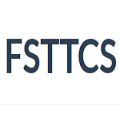We investigate the constant-depth circuit complexity of the Isomorphism Problem, Minimum Generating Set Problem (MGS), and Sub(quasi)group Membership Problem (Membership) for groups and quasigroups (=Latin squares), given as input in terms of their multiplication (Cayley) tables. Despite decades of research on these problems, lower bounds for these problems even against depth-$2$ AC circuits remain unknown. Perhaps surprisingly, Chattopadhyay, Tor\'an, and Wagner (FSTTCS 2010; ACM Trans. Comput. Theory, 2013) showed that Quasigroup Isomorphism could be solved by AC circuits of depth $O(\log \log n)$ using $O(\log^2 n)$ nondeterministic bits, a class we denote $\exists^{\log^2(n)}FOLL$. We narrow this gap by improving the upper bound for many of these problems to $quasiAC^0$, thus decreasing the depth to constant. In particular, we show: - MGS for quasigroups is in $\exists^{\log^2(n)}\forall^{\log n}NTIME(\mathrm{polylog}(n))\subseteq quasiAC^0$. Papadimitriou and Yannakakis (J. Comput. Syst. Sci., 1996) conjectured that this problem was $\exists^{\log^2(n)}P$-complete; our results refute a version of that conjecture for completeness under $quasiAC^0$ reductions unconditionally, and under polylog-space reductions assuming EXP $\neq$ PSPACE. - MGS for groups is in $AC^{1}(L)$, improving on the previous upper bound of $P$ (Lucchini & Thakkar, J. Algebra, 2024). - Quasigroup Isomorphism belongs to $\exists^{\log^2(n)}AC^0(DTISP(\mathrm{polylog},\log)\subseteq quasiAC^0$, improving on the previous bound of $\exists^{\log^2(n)}L\cap\exists^{\log^2(n)}FOLL\subseteq quasiFOLL$ (Chattopadhyay, Tor\'an, & Wagner, ibid.; Levet, Australas. J. Combin., 2023). Our results suggest that understanding the constant-depth circuit complexity may be key to resolving the complexity of problems concerning (quasi)groups in the multiplication table model.
翻译:暂无翻译




